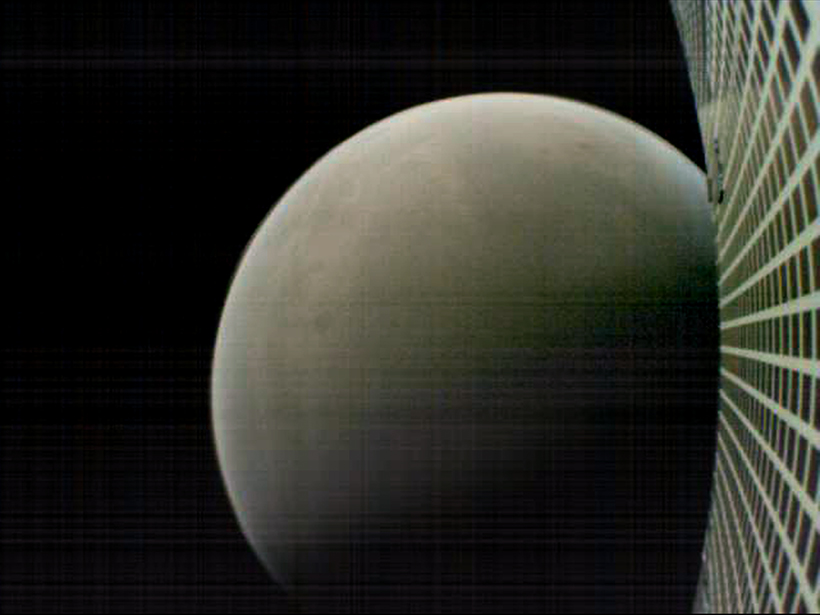Mars was rapidly receding into the distance as NASA’s Mars Cube One B (MarCO-B) took this image of one of its own solar panels and the Red Planet. Last week, MarCO-B, nicknamed WALL-E, and its twin CubeSat MarCO-A, nicknamed EVE, successfully completed a 7-month journey to Mars alongside NASA’s Interior Exploration using Seismic Investigations, Geodesy and Heat Transport (InSight) lander. WALL-E turned back to Mars after its flyby and captured this image at a distance of 7,600 kilometers from the planet.
EVE and WALL-E, which each measure just 24.3 by 11.8 centimeters, are the first CubeSats to travel to another planet. The two spacecraft fulfilled their mission goals on 26 November when they transmitted data back to Earth during InSight’s descent and signaled the lander’s safe arrival on the Martian surface. In addition, WALL-E took a series of flyby images, and EVE transmitted radio signals through Mars’s upper atmosphere to help scientists better understand the atmosphere’s interference.
MarCO and InSight launched on 5 May 2018 aboard the same rocket. InSight will conduct a 708-sol (roughly 2-Earth-year) mission studying Mars’s seismology, tectonics, heat transport, and interior structure. The MarCO CubeSats demonstrated that small, affordable satellites can participate in high-quality space missions and may help us explore space in new ways, mission scientists said in a statement.
—Kimberly M. S. Cartier (@AstroKimCartier), Staff Writer
Citation:
Cartier, K. M. S. (2018), Hello, goodbye: First interplanetary CubeSats zip past Mars, Eos, 99, https://doi.org/10.1029/2018EO111123. Published on 04 December 2018.
Text © 2018. The authors. CC BY-NC-ND 3.0
Except where otherwise noted, images are subject to copyright. Any reuse without express permission from the copyright owner is prohibited.

